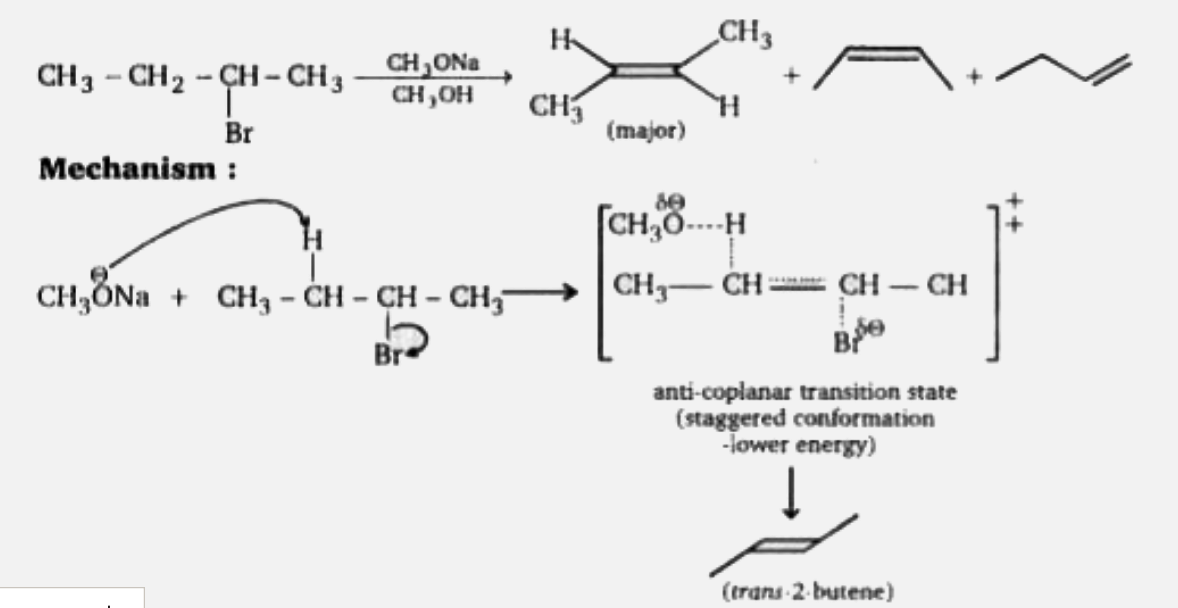The following reaction were carried out.

The finalproduct formed in the above reaction sequence is :Solution in Telugu




The correct Answer is:B
Topper's Solved these Questions
- ALDEHYDES AND KETONESBOOK - MS CHOUHANCHAPTER - ALDEHYDES AND KETONESEXERCISE - LEVEL-2
20 Videos
- ALCOHOL,ETHERS AND EPOXIDESBOOK - MS CHOUHANCHAPTER - ALCOHOL,ETHERS AND EPOXIDESEXERCISE - SUBJECTIVE PROBLEMS
1 Videos
- ALKYL HALIDES (ELIMINATION REACTION) BOOK - MS CHOUHANCHAPTER - ALKYL HALIDES (ELIMINATION REACTION) EXERCISE - LEVEL-2
25 Videos
Similar Questions
Select the best choice for example (A to L) from the examples (a to n) given below. Write your choice in the box given.


View Solution
Maximum number of moles of Ac2O consumed by reactant (A) is :
View SolutionComprehension
E2 raction → Elimination bimolecular
In the general mechanism of the E2 reaction a strong base abstract a proton on a carbon atom adjacent to the one of the leaving group. As the abstracts a proton , a double bond forms and the leaving group leaves.

Identify the rate ofreaction of given compounds in E2 reaction:

View SolutionThe following conversion reaction can be carried out by using reaction sequences :

View SolutionThe following reaction were carried out .

The final product formed in the above reaction sequence is :
View SolutionThe finalproduct of the reaction,

View Solution
In the above reaction sequence, X is
View SolutionThe following conversion reaction can be carried out by using reaction sequence/s.

View Solutionn-Butylcyclohexane is formed through the following sequence of reactions.

In the above scheme of reactions, "X" is -
View SolutionThe most appropriate sequence of the reactions for carrying out the following conversion is
View SolutionUsing which of the sequence of reactions given, the following conversion can be carried out
View Solution
यह अभिक्रिया निम्न मध्यवर्ती द्वारा होती है
View Solution
उपरोक्त अभिक्रिया अनुक्रम में Z है:
View SolutionThe following conversion reaction can be carried out by using
reaction sequence/s.

View Solutionn-Butylcyclohexane is formed through the following sequence of reactions. In the above scheme of reactions, "X" is -
View SolutionThe most appropriate sequence of the reactions for carrying out the following conversion is

View Solution

